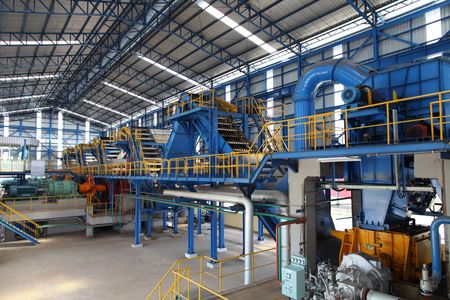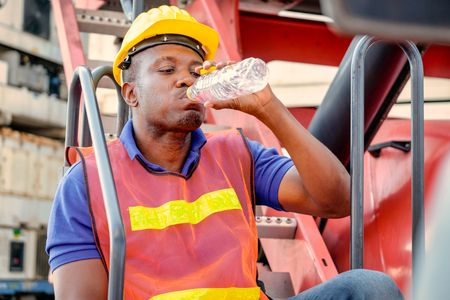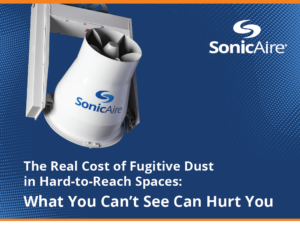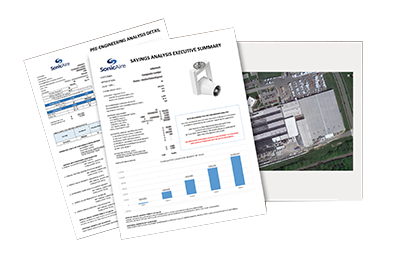According to Section 5(a)(1) of the Occupational Safety and Health Act of 1970, every employee is entitled to a safe workplace, free of known hazards. However, there has been no federal standard on heat stress that prescribed how companies were required to protect employees from a high-temperature work environment.
Until now.
On September 20, 2021, OSHA announced it would be exploring new standards to protect workers from heat hazards, both indoors and out.
 In their release, OSHA stated that “43 workers died from heat illness in 2019, and at least 2,410 others suffered serious injuries and illnesses.” The Atlantic Council’s Adrienne Arsht-Rockefeller Foundation Resilience Center, estimates “the economic loss from heat to be at least $100 billion annually – a number that could double by 2030 and quintuple by 2050 under a higher emissions scenario.”
In their release, OSHA stated that “43 workers died from heat illness in 2019, and at least 2,410 others suffered serious injuries and illnesses.” The Atlantic Council’s Adrienne Arsht-Rockefeller Foundation Resilience Center, estimates “the economic loss from heat to be at least $100 billion annually – a number that could double by 2030 and quintuple by 2050 under a higher emissions scenario.”
With these figures in mind, OSHA is hosting a virtual Stakeholder Meeting on OSHA Initiatives to Protect Workers from Heat-Related Hazards on May 3, 2022.
What We Know Right Now
If your company has kept up on training and OSHA regulations, you know that federal heat stress standards aren’t clearly defined. Rather than explicit regulations regarding heat stress, more generic “guidelines” have been somewhat open to interpretation. As Industrial Hygiene in the Workplace noted in their April newsletter, “employers have a duty to protect workers from recognized serious hazards in the workplace, including heat-related hazards.” However, without a clear standard, companies can currently choose what that duty requires of them.
Additionally, OSHA’s regional divisions have developed standards for those residing in areas with higher temperatures, but adopting a national standard has been overlooked until now. With the alarming rate of heat-related injuries nationwide, OSHA is taking a closer look at measures to address this issue.
The Real Cost of Manual Dust Cleaning
It isn’t until you sit down and start adding up all of the costs the problem becomes apparent.
What To Expect in OSHA’s New Heat Standards?
The standards will change, and regulations will very likely become more difficult for employers to manage. Although we can’t predict the outcome with certainty, we can take a page from OSHA’s regional directives for higher temperature regions and expect similar policies to emerge.
The OSHA Regional Emphasis Program for Heat Illnesses for Arkansas, Louisiana, Oklahoma, New Mexico, and Texas requires daily analysis of the Heat Index and employers to take additional measures on days forecasted above 80°F. More training, additional first aid kits, drinking water, acclimation accommodations, and provisions for immediate care are all detailed within the program. It’s safe to assume that this will be used as a baseline for the federal standard, as well.

Malveaux goes on to say, “Almost all of them [heat-related deaths] are preventable. We understand how bodies heat up. And we understand the interventions. People don’t need to die in the heat. These are unnecessary deaths.”
Outside
There’s not much you can do about the outdoor temperatures. However, these new regulations will require you to change the way outdoor work gets done.
- For outdoor/indoor combination environments, you can expect to:
- Allow more time for acclimation to hotter environments (the CDC currently recommends that employees gradually increase heat exposure over a 7-14 day window).
- Provide cooler environments indoors by offering air-conditioned areas as a reprieve.
- For exclusively outdoor working environments, you may be required to:
- Hire additional workers to compensate for additional break times.
- Provide relief from the heat in the form of shelter, shade, water, and ventilation.
Inside
- For traditional factory environments, you may be expected to:
- Purchase additional equipment to decrease your facility’s ambient temperature.
- Provide free, easily accessible water for employees to maintain hydration
- Offer more frequent breaks to allow employees to cool off.
- For Class II Environments, (and more on those below) there will likely be more strict regulations:
- Expect factories with these environments to be hit harder than factories without.
- All the traditional regulations and then some.
- Mandated maximum working hours (overtime limitations).
Heat Standards in Class II Environments
According to NFPA 70, a Class II Environment is defined as a location where:
1) Ignitable concentrations of hazards exist under normal operating conditions and/or where the hazard is caused by frequent maintenance or repair work or frequent equipment failure; or
2) Ignitable concentrations of hazards exist under abnormal operating conditions.
If your facility is a Class II environment, (one in which combustible dust is an everyday battle, e.g., paper, feed, and corn mills, metal powder manufacturers, or coal plants), preventing or cleaning combustible dust buildup should already be part of your maintenance plan. However, you can expect much stricter enforcement on your implementation of their preventative heat measures as well.
This is not only because dust build-up creates a greater risk for combustion, but also because cleaning the rafters manually will put workers in one of the hottest places in your facility: overhead spaces. When your dust maintenance plan requires workers to enter these areas, they’re in more danger due to heat stress and lower air quality.
This is where SonicAire can help your employee’s safety and allow you to maintain constant compliance with OSHA’s regulations. Our dust control fans will keep your employees out of the rafters in extreme temperatures while also preventing the combustion risk that comes when you combine the fugitive dust with potential ignition sources.
Dust buildup doesn’t have to be an expected problem, even for Class II environments. With a SonicAire fan system, designed especially for your facility, you’ve prevented the problem from ever occurring and are averting the risk before OSHA cracks down on a federal heat standard.
What This Means for Your Company
As you well know, OSHA’s regulations nearly always have consequences for your facility’s operations. These regulation updates will undoubtedly impact all manufacturing companies to some degree. If you’re already in a region that enforces a heat standard, you may not see as dramatic of an impact, but federal regulations and enforcement can be different from regional.
Of course, you’ll have time to comply. OSHA doesn’t expect or require overnight changes to procedure and/or equipment. You can expect similar timeframes to other OSHA Standards Development. They will typically allow 30-60 days to comply with new rules and regulations.

Your facility will need to make every effort to show OSHA that you’re complying with these regulations. Inspectors will identify areas of concern for your operations. This will include direct sunlight, hot equipment, furnaces, boilers, ovens, etc.
You’ll also be required to maintain the preventative equipment and tools needed to minimize heat’s effect on your employees.
These changes may be genuinely detrimental to your company’s bottom line. But, being aware of them sooner rather than later may save you headaches in the long run.
Getting Ahead of New OSHA Heat Standards
The time to act isn’t when you’re on the clock. Don’t wait until the inspection occurs to start your heat standard compliance. Your company should be the trendsetter, the standard by which other companies are compared.
When your facility has a problem with fugitive dust, sending your staff into high-temperature environments creates additional dangers. You may already be taking the precautions that this initiative will regulate, but if not, you’ll want to get ahead of the curve.
If you’re interested in creating a work environment in which your employees are safe and you’re protected from the dangers of combustible dust, contact us to learn more about our Dust Control Solutions and how they’ve helped thousands of businesses around the world.
SonicAire Fans – A Cost-Effective Alternative
We’re not going to lie to you. Installing a SonicAire Dust Control Fan System requires an investment. There are very few facilities that can get by with a couple of fans. But the long-term benefits speak for themselves.
SonicAire fans either run for specified periods during the day or all day, depending upon your operations and dust production level. However, they use two different tactics to prevent combustible dust buildup in overhead areas.
First, they clean off higher surfaces with continual airflow. This prevents buildup and eliminates the cleaning of these areas. Second, a properly engineered system creates an Air Barrier to prevent warm air currents from bringing dust up into overhead spaces.
Let’s look at how they impact the costs we’ve highlighted above.
Measuring the Difference
Each facility is different. In manufacturing and processing, operations produce varying levels and types of fugitive dust. But each facility is likely overspending on manual cleaning or simply not cleaning enough.
When you consider the labor, equipment, and lost productivity that goes into manual cleaning practices and then add in the insurance costs, potential fines, and employee dissatisfaction. Is manually cleaning your facility really saving you money?
We’re confident our combustible dust control systems will save your facility money even with the initial investment to purchase and install. But, if you’re not 100% sold, we get it. That’s why we offer free dust management plans with ROI Analysis. These engineered plans recommend the amount and placing of fans to ensure maximum protection from dust buildup.
Click here to request your Free Dust Management Plan.
Or contact us to discuss dust control solutions for your facility.
The Real Cost of Manual Dust Cleaning
It isn’t until you sit down and start adding up all of the costs the problem becomes apparent.
SonicAire Fans – A Cost-Effective Alternative
We’re not going to lie to you. Installing a SonicAire Dust Control Fan System requires an investment. There are very few facilities that can get by with a couple of fans. But the long-term benefits speak for themselves.
SonicAire fans either run for specified periods during the day or all day, depending upon your operations and dust production level. However, they use two different tactics to prevent combustible dust buildup in overhead areas.
First, they clean off higher surfaces with continual airflow. This prevents buildup and eliminates the cleaning of these areas. Second, a properly engineered system creates an Air Barrier to prevent warm air currents from bringing dust up into overhead spaces.
Let’s look at how they impact the costs we’ve highlighted above.
According to Section 5(a)(1) of the Occupational Safety and Health Act of 1970, every employee is entitled to a safe workplace, free of known hazards. However, there has been no federal standard on heat stress that prescribed how companies were required to protect employees from a high-temperature work environment.
Until now.
On September 20, 2021, OSHA announced it would be exploring new standards to protect workers from heat hazards, both indoors and out.
 In their release, OSHA stated that “43 workers died from heat illness in 2019, and at least 2,410 others suffered serious injuries and illnesses.” The Atlantic Council’s Adrienne Arsht-Rockefeller Foundation Resilience Center, estimates “the economic loss from heat to be at least $100 billion annually – a number that could double by 2030 and quintuple by 2050 under a higher emissions scenario.”
In their release, OSHA stated that “43 workers died from heat illness in 2019, and at least 2,410 others suffered serious injuries and illnesses.” The Atlantic Council’s Adrienne Arsht-Rockefeller Foundation Resilience Center, estimates “the economic loss from heat to be at least $100 billion annually – a number that could double by 2030 and quintuple by 2050 under a higher emissions scenario.”
With these figures in mind, OSHA is hosting a virtual Stakeholder Meeting on OSHA Initiatives to Protect Workers from Heat-Related Hazards on May 3, 2022.
What We Know Right Now
If your company has kept up on training and OSHA regulations, you know that federal heat stress standards aren’t clearly defined. Rather than explicit regulations regarding heat stress, more generic “guidelines” have been somewhat open to interpretation. As Industrial Hygiene in the Workplace noted in their April newsletter, “employers have a duty to protect workers from recognized serious hazards in the workplace, including heat-related hazards.” However, without a clear standard, companies can currently choose what that duty requires of them.
Additionally, OSHA’s regional divisions have developed standards for those residing in areas with higher temperatures, but adopting a national standard has been overlooked until now. With the alarming rate of heat-related injuries nationwide, OSHA is taking a closer look at measures to address this issue.
What To Expect in OSHA’s New Heat Standards?
The standards will change, and regulations will very likely become more difficult for employers to manage. Although we can’t predict the outcome with certainty, we can take a page from OSHA’s regional directives for higher temperature regions and expect similar policies to emerge.
The OSHA Regional Emphasis Program for Heat Illnesses for Arkansas, Louisiana, Oklahoma, New Mexico, and Texas requires daily analysis of the Heat Index and employers to take additional measures on days forecasted above 80°F. More training, additional first aid kits, drinking water, acclimation accommodations, and provisions for immediate care are all detailed within the program. It’s safe to assume that this will be used as a baseline for the federal standard, as well.

Malveaux goes on to say, “Almost all of them [heat-related deaths] are preventable. We understand how bodies heat up. And we understand the interventions. People don’t need to die in the heat. These are unnecessary deaths.”

Malveaux goes on to say, “Almost all of them [heat-related deaths] are preventable. We understand how bodies heat up. And we understand the interventions. People don’t need to die in the heat. These are unnecessary deaths.”
Outside
There’s not much you can do about the outdoor temperatures. However, these new regulations will require you to change the way outdoor work gets done.
- For outdoor/indoor combination environments, you can expect to:
- Allow more time for acclimation to hotter environments (the CDC currently recommends that employees gradually increase heat exposure over a 7-14 day window).
- Provide cooler environments indoors by offering air-conditioned areas as a reprieve.
- For exclusively outdoor working environments, you may be required to:
- Hire additional workers to compensate for additional break times.
- Provide relief from the heat in the form of shelter, shade, water, and ventilation.
Inside
- For traditional factory environments, you may be expected to:
- Purchase additional equipment to decrease your facility’s ambient temperature.
- Provide free, easily accessible water for employees to maintain hydration
- Offer more frequent breaks to allow employees to cool off.
- For Class II Environments, (and more on those below) there will likely be more strict regulations:
- Expect factories with these environments to be hit harder than factories without.
- All the traditional regulations and then some.
- Mandated maximum working hours (overtime limitations).
Heat Standards in Class II Environments
According to NFPA 70, a Class II Environment is defined as a location where:
1) Ignitable concentrations of hazards exist under normal operating conditions and/or where the hazard is caused by frequent maintenance or repair work or frequent equipment failure; or
2) Ignitable concentrations of hazards exist under abnormal operating conditions.
If your facility is a Class II environment, (one in which combustible dust is an everyday battle, e.g., paper, feed, and corn mills, metal powder manufacturers, or coal plants), preventing or cleaning combustible dust buildup should already be part of your maintenance plan. However, you can expect much stricter enforcement on your implementation of their preventative heat measures as well.
This is not only because dust build-up creates a greater risk for combustion, but also because cleaning the rafters manually will put workers in one of the hottest places in your facility: overhead spaces. When your dust maintenance plan requires workers to enter these areas, they’re in more danger due to heat stress and lower air quality.
This is where SonicAire can help your employee’s safety and allow you to maintain constant compliance with OSHA’s regulations. Our dust control fans will keep your employees out of the rafters in extreme temperatures while also preventing the combustion risk that comes when you combine the fugitive dust with potential ignition sources.
Dust buildup doesn’t have to be an expected problem, even for Class II environments. With a SonicAire fan system, designed especially for your facility, you’ve prevented the problem from ever occurring and are averting the risk before OSHA cracks down on a federal heat standard.
What This Means for Your Company
As you well know, OSHA’s regulations nearly always have consequences for your facility’s operations. These regulation updates will undoubtedly impact all manufacturing companies to some degree. If you’re already in a region that enforces a heat standard, you may not see as dramatic of an impact, but federal regulations and enforcement can be different from regional.
Of course, you’ll have time to comply. OSHA doesn’t expect or require overnight changes to procedure and/or equipment. You can expect similar timeframes to other OSHA Standards Development. They will typically allow 30-60 days to comply with new rules and regulations.

Your facility will need to make every effort to show OSHA that you’re complying with these regulations. Inspectors will identify areas of concern for your operations. This will include direct sunlight, hot equipment, furnaces, boilers, ovens, etc.
You’ll also be required to maintain the preventative equipment and tools needed to minimize heat’s effect on your employees.
These changes may be genuinely detrimental to your company’s bottom line. But, being aware of them sooner rather than later may save you headaches in the long run.
Getting Ahead of New OSHA Heat Standards
The time to act isn’t when you’re on the clock. Don’t wait until the inspection occurs to start your heat standard compliance. Your company should be the trendsetter, the standard by which other companies are compared.
When your facility has a problem with fugitive dust, sending your staff into high-temperature environments creates additional dangers. You may already be taking the precautions that this initiative will regulate, but if not, you’ll want to get ahead of the curve.
If you’re interested in creating a work environment in which your employees are safe and you’re protected from the dangers of combustible dust, contact us to learn more about our Dust Control Solutions and how they’ve helped thousands of businesses around the world.
Measuring the Difference
Each facility is different. In manufacturing and processing, operations produce varying levels and types of fugitive dust. But each facility is likely overspending on manual cleaning or simply not cleaning enough.
When you consider the labor, equipment, and lost productivity that goes into manual cleaning practices and then add in the insurance costs, potential fines, and employee dissatisfaction. Is manually cleaning your facility really saving you money?
We’re confident our combustible dust control systems will save your facility money even with the initial investment to purchase and install. But, if you’re not 100% sold, we get it. That’s why we offer free dust management plans with ROI Analysis. These engineered plans recommend the amount and placing of fans to ensure maximum protection from dust buildup.
Click here to request your Free Dust Management Plan.
Or contact us to discuss dust control solutions for your facility.

GET YOUR FREE GUIDE:
The Real Cost of Fugitive Dust in Hard-to-Reach Spaces
What You Can’t See Can Hurt You
To help protect your workplace, we’ve compiled the following resource, The Real Cost of Fugitive Dust in Hard-to-Reach Spaces: What You Can’t See Can Hurt You. In it, we identify seven ways fugitive dust is likely impacting your facility and its profitability.
These costs go beyond housekeeping and explain why you should be preventing dust buildup to protect the bottom line, not just to stay in compliance.

